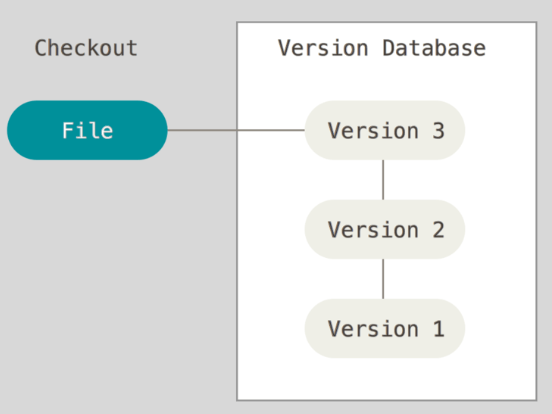Version Control Systems (VCS) are like the backbone of your software development process. They keep track of every change you make to your codebase, whether you’re working alone or in a team. Here’s why they’re crucial, especially when you integrate them with CI/CD pipelines.
The Importance of Version Control in CI/CD
Imagine working on a project with a team of developers, each one contributing different pieces of code. Without a proper system to manage these contributions, things can get chaotic fast. That’s where a Version Control System, like Git, becomes indispensable.
Track Changes Effectively: Version control allows you to keep a detailed history of every change made to your codebase. Whether it’s adding new features, fixing bugs, or optimizing performance, every change is recorded. This makes it easy to trace back and understand what was done, when, and by whom.
Collaboration Made Easy: Working in a team means dealing with multiple contributions. Version control systems help manage this by allowing developers to work on separate branches and then merge their work into the main project without conflicts. This is particularly important in CI/CD pipelines where the code is continuously integrated and tested.
Safety Net: Mistakes happen. Maybe a new feature breaks something else in the system. With version control, you can easily roll back to a previous state that was working perfectly, making it an essential tool for minimizing risk in your CI/CD processes.
Audit and Compliance: In many industries, having a detailed log of changes is not just useful but a compliance requirement. Version control systems provide a clear audit trail that can be invaluable for meeting these regulatory requirements.
Use of Version Control
1. Centralized Codebase:
A VCS, such as Git, acts as a central repository where all your code resides. This means that no matter where your team members are, they can always access the latest version of the code, contribute their work, and pull in updates from others. This centralization is vital for CI/CD because the pipeline needs a single source of truth to pull code from and execute builds, tests, and deployments.
2. Branching and Merging:
When working on a large project, multiple features, bug fixes, or experiments are often developed simultaneously. Version control systems allow developers to create branches, essentially isolated copies of the codebase, where changes can be made without affecting the main branch. Once the work on a branch is complete, it can be merged back into the main branch.
In the context of CI/CD:
- Feature branches: These can be tested in isolation using CI/CD pipelines before being merged.
- Merging: When a branch is merged into the main branch, CI/CD pipelines automatically kick in to test and deploy the changes, ensuring that integration is smooth and nothing breaks.
3. Conflict Resolution:
When two developers make changes to the same part of the code, conflicts can arise. A VCS like Git helps identify these conflicts and provides tools to resolve them. CI/CD pipelines often include steps to automatically detect these conflicts during integration and ensure that only conflict-free code is merged and deployed.
4. Version History and Rollback:
Every change in a VCS is recorded, creating a detailed history of the project. This history is invaluable for CI/CD:
- Audit Trails: You can track who made what change and when, which is crucial for debugging and compliance.
- Rollbacks: If a deployment goes wrong, CI/CD pipelines can use the VCS to roll back to a previous stable version of the code, ensuring minimal disruption.
How Git Enhances CI/CD Pipelines
Git, being the most widely used VCS, has several features that make it an excellent choice for integrating with CI/CD pipelines.
1. Git Hooks and Triggers:
Git allows the use of hooks—scripts that run automatically when certain events occur in the Git repository (like commits or pushes). These hooks can be used to trigger CI/CD pipelines:
- Pre-commit Hooks: Ensure code quality checks or run tests before changes are committed.
- Post-receive Hooks: Automatically trigger CI/CD pipelines when new code is pushed to a repository.
This automation ensures that your CI/CD process is tightly coupled with your version control, reducing the chances of human error and speeding up the development cycle.
2. Integration with CI/CD Tools:
Git integrates seamlessly with many CI/CD tools like Jenkins, GitLab CI/CD, CircleCI, and Travis CI. This integration allows you to:
- Automate Builds: Automatically build your application whenever code is pushed to the repository.
- Run Tests: Execute a suite of automated tests to ensure the code is functioning as expected.
- Deploy Code: If the tests pass, the code can be automatically deployed to staging or production environments.
For example, when you push code to a Git repository, a tool like Jenkins can automatically detect the change, pull the latest code, run tests, and if everything checks out, deploy the application to production—all without manual intervention.
3. Continuous Integration with Git:
In a CI pipeline, Git plays a critical role in ensuring that all code changes are integrated frequently and early. Here’s how:
- Frequent Commits: Developers commit their code frequently to the main branch. Each commit triggers a new build and test cycle in the CI pipeline, catching issues early.
- Code Reviews: Git platforms like GitHub or GitLab offer pull request mechanisms where developers can submit their changes for review before merging. CI pipelines can automatically test these pull requests, ensuring only high-quality, tested code makes it to the main branch.
4. Continuous Deployment and Git:
Continuous Deployment takes Continuous Integration a step further by automatically deploying code to production after it passes all tests. Git’s ability to tag specific commits (e.g., marking them as releases) makes it easy to manage deployments:
- Tagging Releases: When a commit is tagged as a release, the CI/CD pipeline can be configured to deploy that specific version to production.
- Rollback Mechanisms: If a deployment fails, Git allows you to revert to a previous release tag quickly, minimizing downtime.
The combination of Version Control Systems, especially Git, with CI/CD pipelines creates a powerful, automated workflow that enhances the efficiency and reliability of software development. Version control provides the foundation by managing code changes, ensuring collaboration, and offering a safety net through version history and rollback capabilities. CI/CD pipelines build on this foundation, automating testing, integration, and deployment, enabling teams to deliver software faster, with higher quality, and less risk.

